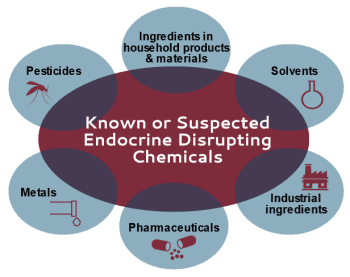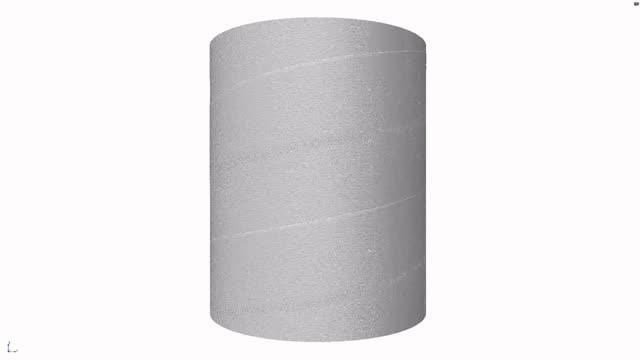
Through solar absorbers (9 panels, 5cm by 5cm in size), the team of Kyung-guen song are discussing the process of producing water at high efficiency with membrane distillation technology.
CREDIT
Korea Institue of Science and Technology(KIST)
Development of highly efficient membrane distillation process with excellent solar absorption; successful case of research that combines material technologies with water treatment technologies.
A joint research team from the Korea Institute of Science and Technology (KIST), led by Dr. Kyung-guen Song from the KIST Water Cycle Research Center and Dr. Won-jun Choi from the KIST Center for Opto-Electronic Materials and Devices, announced that it had used solar heat, a source of renewable energy, to develop a highly efficient membrane distillation technology that can produce drinking water from seawater or wastewater.
Membrane distillation is a desalination technology that turns seawater into potable water. In this process, water vapor is evaporated from seawater by thermal energy and passed through a *hydrophobic membrane, which separates the water vapor from the seawater. The water vapor then condensates to produce drinking water. Compared to existing thermal desalination methods, membrane distillation can be performed at low temperatures, which means it requires less energy, and therefore, it is receiving attention as a next-generation desalination technology. Solar-driven membrane distillation technology, in particular, has been receiving much attention, as it uses solar heat, a form of renewable energy, as its heat source, thereby helping to prevent global warming by reducing the use of fossil fuels.
*Hydrophobic membrane: A separating membrane used for distillation because of its low affinity with water, allowing only water vapor to pass through
The most important part of solar-driven membrane distillation is the solar absorber, which is used to gather solar light and heat up water. Previously commercialized solar absorbers have low solar absorption performance and can only be used in certain areas with the proper solar radiation conditions. Another weakness of preexisting systems is that their solar absorber must be very large in size in order to properly absorb the necessary amount of solar radiation.
The KIST research team applied a new solar absorber using titanium (Ti) and magnesium fluoride (MgF2) to develop a high-efficient solar driven membrane distillation technology that can exponentially increase water production.
The newly developed solar absorber absorbs over 85% of solar energy with a wavelength of 0.3-2.5 ?m, which is the main spectrum of solar energy, while being able to heat water to temperatures of more than 80°C. Furthermore, when the absorber was applied to a solar-driven membrane distillation, it was possible to produce 4.78 L/m2 of potable water over a period of 10 hours on a clear day in September. This demonstrates a very high level of performance and a production volume of more than double that of previously commercialized solar absorbers.
** Based on the annual average global insolation of Seoul ( 3.23 kWh/m2/day): An existing solar heat absorber with an area of 1m2, produced 2.14 L of water / A solar heat absorber of the same area, newly developed by the KIST, produced 4.49 L of water over the same time period.
The new solar absorber uses a multi-layer film made of titanium (Ti) metal and magnesium fluoride (MgF2) that can be simply fabricated using an electro-beam evaporator. Since the new solar absorber has excellent solar absorption performance, it is possible to apply it not only to solar-driven membrane distillation, but also to solar boilers and other apparatuses.
The solar-driven membrane distillation technology that the research team developed using the new solar absorber uses solar as its heat source. As such, the technology can be used to supply drinking water in isolated areas without energy infrastructure such as underdeveloped countries, island areas, and remote areas with a lack of potable water. The technology is also expected to be used by the military to supply drinking water to soldiers stationed abroad or at army field posts.
“This study combines material technologies with water treatment technologies and is significant in that it is a successful case of integrated research that has resulted in revolutionary achievements,” said Dr. Kyung-guen Song of the KIST. “We plan to continue developing water treatment technologies that apply advanced materials technologies through ongoing integrated research.”
The Latest Updates from Bing News & Google News
Go deeper with Bing News on:
Drinking water production
- Drink coconut water daily in summer, it is beneficial for health as well as skin
In scorching summer months, staying hydrated becomes paramount for maintaining overall health and well-being. While there are numerous optio..|News Track ...
- Limits on PFAS in Drinking Water to Benefit 100M Americans
The U.S. Environmental Protection Agency has issued the first national, legally enforceable drinking water standard to protect communities from exposure to harmful per-and polyfluoroalkyl substances, ...
- The #1 Drink To Help You Poop, According to a Dietitian
Aside from water to help you stay hydrated, Lauren Manaker, MS, RDN says that coffee is one of the best drinks to choose when relieving constipation. And if you're not a coffee drinker, she says prune ...
- Nestlé suspends part of Perrier water production in France due to contamination
Nestlé said it “detected a temporary deviation” at one of its wells after a “period of exceptionally heavy rainfall”.
- Implications of PFAS Drinking Water Standards On Drinking Water Plants Operated Under P3 Agreements
For over 25 years, we have represented municipalities in procuring and contracting for new drinking water treatment and production facilities with private companies. The P3 agreements for these ...
Go deeper with Google Headlines on:
Drinking water production
[google_news title=”” keyword=”drinking water production” num_posts=”5″ blurb_length=”0″ show_thumb=”left”]
Go deeper with Bing News on:
Solar-driven membrane distillation technology
- A strategy to boost the efficiency of perovskite/organic solar cells
In recent years, researchers have been experimenting with a wide range of solar cell designs in the hope of facilitating their widespread deployment. Organic solar cells based on perovskite materials ...
- Maxeon Solar Technologies (NASDAQ: MAXN)
Maxeon Solar Technologies Ltd. engages in the manufacturer and marketer of premium solar power technology. Its products include Maxeon Line of IBC solar cells and panels, and the Performance Line ...
- NASA Successfully Deploys Innovative Solar Sail Technology in Orbit
Advancements in space travel take another leap forward as NASA demonstrates its latest breakthrough with solar sail technology. Like the maritime sails of yore, solar sails offer a promising ...
- Increasing the sustainability of solar technology
We hope these dual outcomes will increase the viability for homes and businesses, worldwide, to host and use solar technology. Dr David J Lewis / Deputy Head of Department and Reader in Materials ...
- DOST Balik Scientist Revolutionizes Packaging with Plant Waste Innovation
Filipino scientist Dr. Noel Peter Tan, a Medium-Term Department of Science and Technology (DOST) Balik Scientist and head of the Center for Advanced New Materials, Engineering, and Emerging ...
Go deeper with Google Headlines on:
Solar-driven membrane distillation technology
[google_news title=”” keyword=”solar-driven membrane distillation technology” num_posts=”5″ blurb_length=”0″ show_thumb=”left”]










